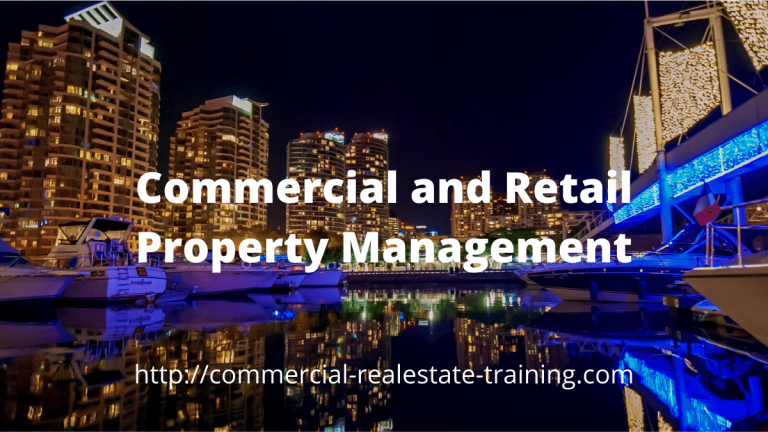Perfect Strategic Commercial Property Management Plan
The strategy for agents in commercial or retail property management is quite simple. In this market, it is about doing more for the client given the elements of the property and the prevailing market conditions.
It is all about optimizing the performance of a property for the owner or client.
When property managers forget about that or ignore or shift the focus, things go wrong. Every property is different, as is each client.

Property management in real estate agencies today is not just about how many properties you manage, what fees you collect, or who your clients are.
It is about how the agency is getting results for their clients, the stability of those results, and how that can impact and enhance the client’s investment situation.
Benchmarks Today
What is the client’s plan for their property, and are you managing the asset in that direction? That is a wise question to ask of your property management team each month.

Of course, different property types respond uniquely to the changing market circumstances, where a property manager’s strategy, experience, and skills become very relevant.
Special property manager skills and a good degree of experience is needed with retail property management. The same can be said for office towers. Industrial is more basic although industrial parks and large warehouses are a challenge of ‘scale’.
The Economy and Its Pressures
In any property market at any time, the property types will be responding to the economy and property market conditions in different ways. Monitoring the many moving real estate investment factors is wise.
So how will the economy impact a property? Try these for starters:
- Higher vacancy factors
- Movements in market rents
- Tenants under business pressures
- Incentives for leasing
- Changes in supply and demand
- Added legalities to lease documentation and compliances
- Shifts in risk management
There are lots of issues to manage in a property today.
Managing Different Property Types
Not all property managers have the right skills or experience to manage the asset or the client to be served. It can also be said that good property managers are hard to find. The ‘burnout’ factor in the industry is high.

Let’s create a base plan for this new client and property scenario. Get the basic facts right before you take on a new property to manage, and then choose the right property manager that matches the property by type and the client’s requirements.
How does that choice of property manager work? The matching process is first with their experience with the property types, skills of negotiation, and then their business maturity.
Base Plan for Managing Property
Given all of those things, there is still the question of if the chosen person to manage a property has the right mix of communication skills, both documentary and also verbal.
Ultimately a commercial or retail property under management is an investment first and foremost. However, as with all investments, there are pressures, opportunities, and hurdles. Rents, recoveries, risks, and redundancies are all there to think about.

Questions About the Property and Client
How can you question a new client and start the information collation process?
Information will help you understand how real things are with the property and the work requirements. Let’s look at where to start with that.
Consider the client’s primary investment targets and the attributes of the property, and then review these things.
1. Vacancy Reduction
One of the major concerns for a property owner will be the control and removal of vacancies in a property. Suppose the property has multiple tenancies, as in a shopping centre; the chance of a vacancy in the future is always there.
The property manager’s job is to reduce those vacancy events and control them. New tenants can be found, and the replacements can be a part of a ‘tenant retention’ or replacement program.
That program can and should be part of the business investment plan for the property. Every managed property (large or small) should have a real estate business investment plan.
2. Market Rents and Comparisons
Every property will have ‘standards’ to consider regarding market rentals by zone, property type, precinct, and asset condition.
So, what are those elements? Changes in those numbers can be applied locally and on a street-by-street basis. There is some information to be gathered and tracked by the property manager.
That information can then be sourced and used at the end of the month or end-of-year property performance plan and budget process.

3. Income Stability and Growth
Every occupancy (tenant) in a managed property will have a lease (or occupancy arrangement or licence), plus the pressures of rental payments, property performance, and business.
As the economy shifts and changes, the income and rentals for a property can come under constraints and adversity. So, the property manager should be ahead of the trends and pressures of income, expenditure, and rental. That way, the peaks and troughs in those things can stabilise.
An experienced asset or property manager will provide recommendations to their client before the matters of income and expenditure become overly challenging or out of balance.
4. Income Enhancements
From the previous two points, it is easy to set some plans to stabilise the income in a managed property.
Understanding that the income for a property will be impacted by vacancies, the economy, and the business pressures in the town or city, strategies and recommendations are a good idea to apply in the property management process.
5. Timely Responses
Staying ahead of current and upcoming property matters is a big part of successfully managing for your clients.
That can be done by referencing lease documentation, tenant meetings, vacancies, and lease enquiry. Use your meeting and conversation notes during the month and report about them at the end of the month. Control and accuracy is the focus here.
In addition, devote part of your monthly report to current issues. That can be split into occupancy, leases, licences, and expansion or contraction pressures.
6. Documentation Accuracy
How are tenant and lease matters documented in your location? There will be rules and requirements to ensure legal occupancy.
Legal occupancy is the priority for planning and controlling a property’s rental cash flow. What lease or tenant documents do you need to reflect valid occupancy?
Consider leases, licences, naming rights, storage, particular areas, and unique tenant requirements.

Property Management Recommendations
From all the previous points, you can see how strategy is a big part of managing any property and the concept can be your point of difference in service.
A strategic approach can only be made and managed by the right property manager who has the time, attitude, and experience to do a good job.







